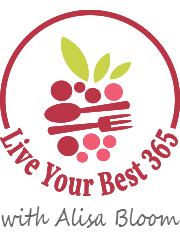
This week, coinciding with National Coffee Day, we’re talking all things caffeine. In case you missed this week’s Facebook live, catch the replay here.
Is caffeine bad for you?
No, (phew!). It enhances focus and metabolism, reduces the risk for Alzheimer’s disease, and reduces certain liver and pancreas conditions.
What’s the right amount, and how much is too much?
A serving size is, unless otherwise specified, 8 ounces. Yes, 1 cup. Now, that may not necessarily mean YOUR serving size (think 12-16 ounce mugs), so you’d need to adjust the numbers to gain a better understanding of your actual caffeine content. About 400mg daily is considered safe for most adults. Be careful how you compare yourself to others when it comes to caffeine tolerance because caffeine metabolism is different from one person to another.
What are the familiar sources of caffeine?
Instant, brewed, and espresso coffees, teas (including some herbal varieties), energy drinks, sodas, supplements, energy bars, and some medications (like for migraine headaches, for example) are some common sources of caffeine.
What about the quality of caffeine sources?
- Choose USDA organic more often to limit heavy metals or pesticide residues.
- Eat good quality food with calorie-free energy drinks to limit blood sugar crashes.
- Limit the ‘extras’ added to drinks such as artificial sweeteners, extra sugars, and fats.
So how quickly can 400mg of caffeine add up?
While decaffeinated products won’t always be zero, they don’t generally contain much caffeine (less than 30mg). However, those who are sensitive will swear they can still feel the effects. Here’s a list of the caffeine content in some products:
- Brewed coffee= about 100-150mg per cup
- Espresso shot= about 65mg
- Herbal tea with Yerba Mate, for example= 40 mg per cup
- Caffeinated tea= about 50-90 mg/cup
- Energy drinks= about 50-150 per serving
- Sodas= can range 30-45 per cup
- Migraine relieving medicine= can contain 65-100mg per tablet
Don’t forget to check labels on bars, supplements, and powders.
So, if you stay under 400mg, you have nothing to worry about, right? Not necessarily. We often gravitate to caffeine to mask something else.
Caffeine is a bladder and digestive tract stimulant. Caffeinated beverages count as a liquid, but it’s good to think about taking in extra water if you’re in the bathroom frequently after having caffeine. As far as caffeine goes, it is a laxative. As a result, it can cause flare-ups for those with digestive conditions and replace a good diet high in fiber and adequate hydration.
Do you need caffeine in the late afternoon for energy? If yes, I would ask: what was the quality of your lunch? Too much added sugar might be creating crashes that make you feel like you need caffeine more often. Are you getting enough B vitamins? There are a host of factors that can interfere with maintaining steady levels.
How do you sleep? Caffeine too late in the day can interfere with your sleep. Also, too much caffeine could be competing with some mineral absorption, like magnesium. A better quality diet might do more for a good night’s rest than chasing a poor night’s sleep with caffeine the next day.
Take a look at where your caffeine intake comes from and spread your caffeine intake throughout the day. Also, check to see if you’re using it to mask something that needs to be addressed.
I hope you enjoyed a Happy National Coffee Day!
Want more food, mood, healing, and balance? Join my Facebook group and don’t forget to join weekly live topics on Facebook, Tuesdays, 3:00 pm CT.
In health,

